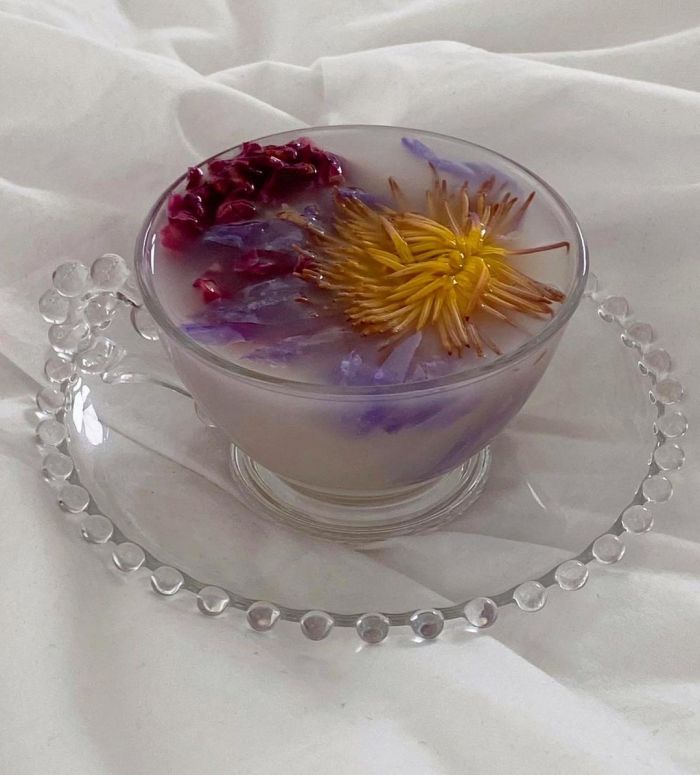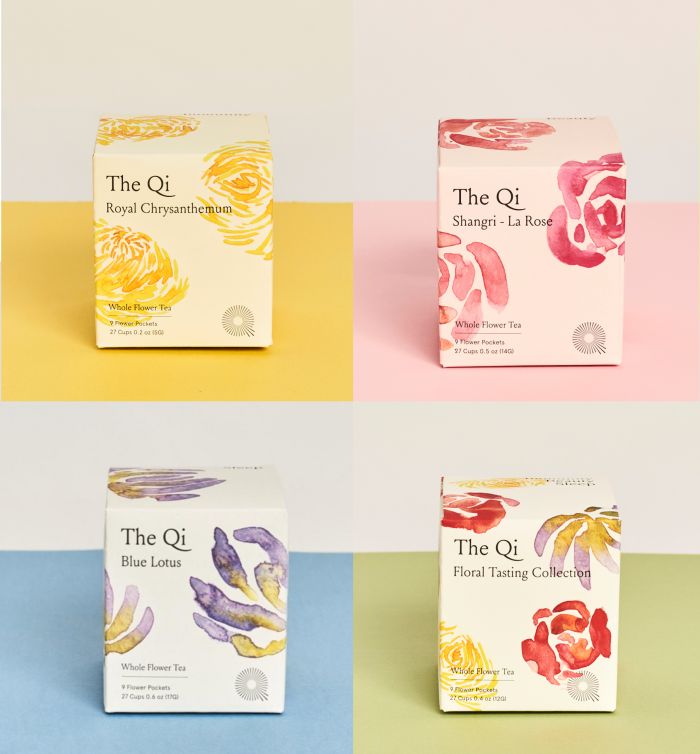
In China, the concept of Qi, is translated as 'breath' or life force of all things: the earth has Qi, plants have Qi, our pets have Qi, the air has it, the plants, everything has it. The food we eat imparts Qi into us as does the tea we drink. It is everywhere.
Yet, this Life Force concept moves into another realm, as according to classical Chinese philosophy, Qi is the force binds all things in the universe. It may be difficult to conceptualize unless one has studied traditional Chinese medicine, or TCM, where Qi has two main branches: the physical or nourishing portion that consists of air, water, and food. The other branch relates to vital fluids and the energy itself that flows along the Meridian points of the body and serves the basis for acupuncture. To many, certain Chinese teas contain strong elements of Qi that allows for greater wellness and well-being, as it maintains balance and flow through the meridians.
Recently, we received a supply of flowering tea, from a company called Qi Tea. The founder, Lisa Li, while visiting her Grandmother in the Yunnan province of China, drank her grandmother’s rose tea daily, and was surprised by the resulting feelings of greater wellness and well-being. So, she returned to the US to help create a company that provided rose and other flowering teas to all.
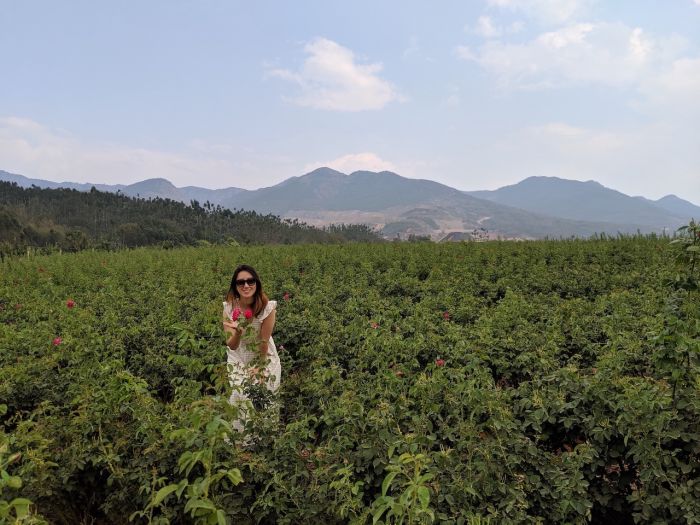
Flowering teas are noted for their appearance a well as their flavor. They are typically made of dried flower petals, and whole dried flowers. The Qi teas are simply dried flowers, but bloom with fragrance and a rebirth when infused by hot water.
We had never tried a whole flower tea or blooming tea, so each Qi Tea was surprising, educational, and a great introduction to a kind of tea common to the East, but still growing in reputation and interest in the West.
In the Qi Tea packets, there are three dried flower teas: one is the Qi Shangri-La Rose tea, made from dried roses, that “bloom” when touched by hot water. The scent, after about a minute, is of roses, and the water in the glass pitcher or pot turns a deep rose, after stirring with bamboo tongs or a fork. Rose tea has been used to help with abdominal pain, loss of appetite, and irregular menstruation, and anxiety. The Qi whole flower rose teas are picked from one-of-a-kind high mountain roses, cultivated in Shangri-La, a city in the Yunnan province of China. This special rose variety is known for its high-level nutrients, flavonoids, and aroma as it is from the most prized first pick of Spring.
Another in the Qi Tea packets is Qi BLUE LOTUS TEA. Similar to the elderflower, the blue lotus has been used in tea for millennia. Once known as the Sacred Blue Lily of the Nile, the Ancient Egyptians used the flower in medicine and celebration. It was also a symbol of life and rebirth as the blue lotus blooms in murky waters one time a year for three days. The taste is unique, and if one has ever tried elderberries or black currants, it has this type of tart, sweet, familiar, yet antique taste.
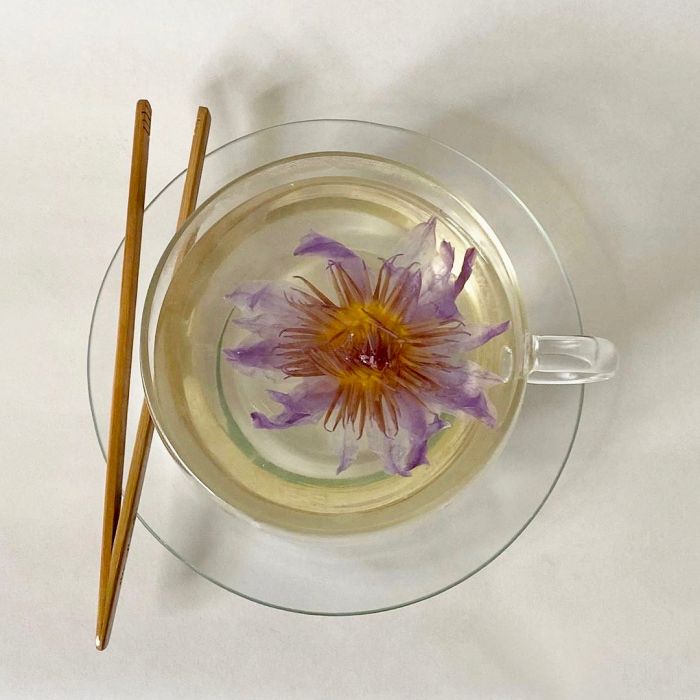
Finally, in the Qi Tea packet, is CHRYSANTHEMUM TEA
In China, chrysanthemum tea has been used to treat fevers, dizziness, headaches, irritated eyes, and high blood pressure. The Qi Chrysanthemum tea also helps bronchial issues. Each whole flower in the tea packet is put directly in hot water and then submerged. The flowers are usually placed directly in the bottom of the tea pitcher or pot before being covered with hot water.
The idea of and practice of brewing flowering tea may seem moderately new to westerners but tea drinking and tea ceremonies are ancient practices to many in certain areas of China. Books have been written on these ceremonies and rituals,, and Chinese poets have explained their affection for tea, whether it is flowering or leaf, or in combination.
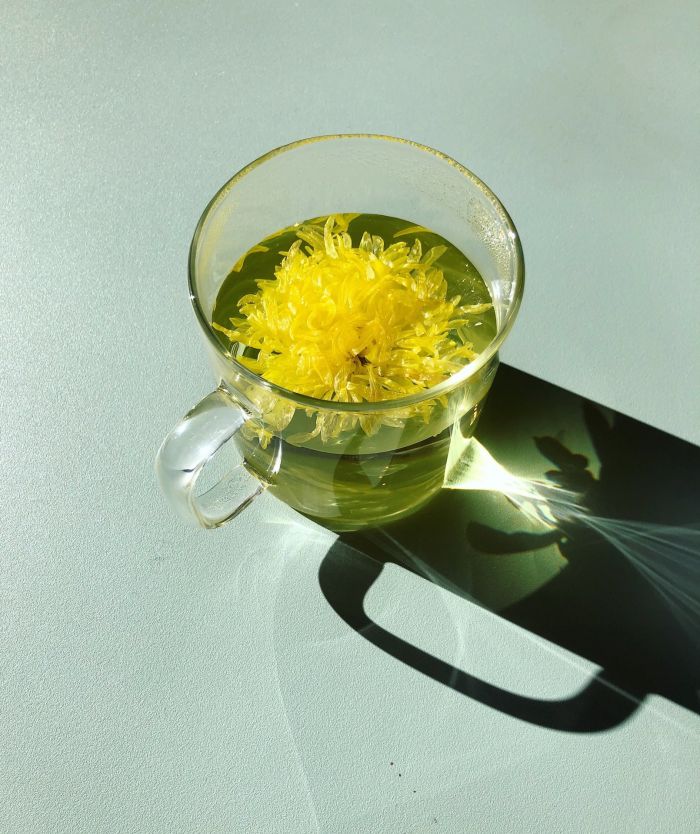
One poet, Lu Tong, wrote of the Seven Bowls of Tea?—?also called The Song of Tea?—?is the perfect example of how fascinating the spiritual dimensions, the Qi of tea can be. Lu describes his change of moods: thirsty at first, then delighted and lightened, and eventually inspired. One might now call his process experience one of the oldest forms of mindfulness. Mount Penglai is an actual mountain, wherein Chinese mythology, immortals are said to have lived. Lu Tong was born in 790 and died in 835 AD. But his tea sensibilities live on.
Seven Bowls of Tea
The first bowl moisturizes my dry lips and throat
The second bowl removes the loneliness in my heart
The third searches dry streams of my soul to fill
The fourth vaporizes the pain of life’s inequities through my pores
The fifth purifies my mind
The sixth helps me to communicate with immortals
The seventh gives me a feeling of extraordinary pleasure
A breeze blows upon my arms
Where is Mount Penglai?
I lean upon this breeze and fly there.
